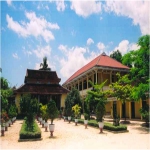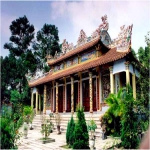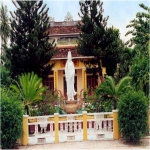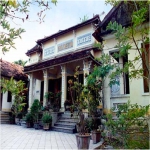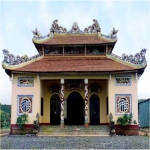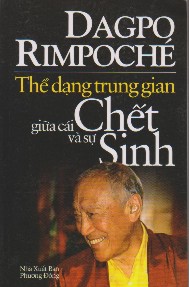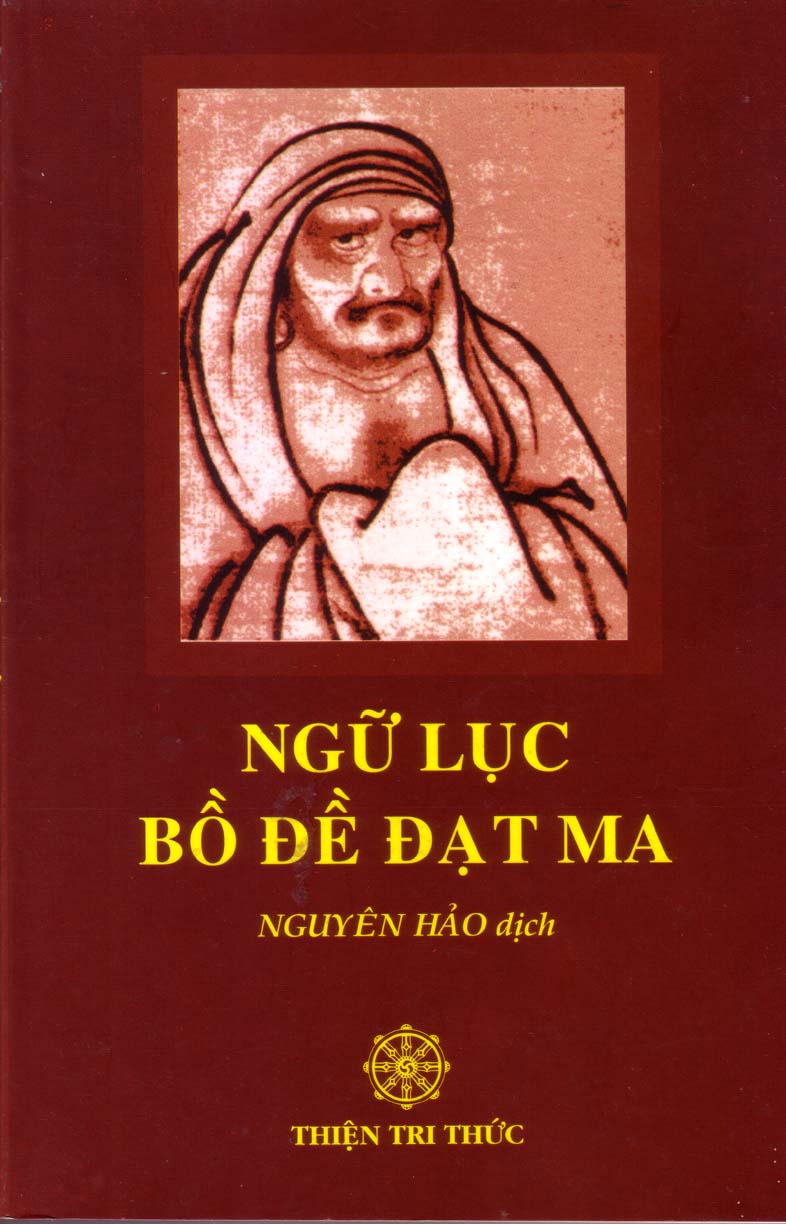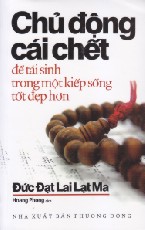On this page, we provide information on the following topics regarding the Kagyu Lineage: Kagyu Scriptures, Tantra and Mahamudra Journeys, the Four Main and Eight Additional Lineages, the Kagyu Seats in Tibet and Exile, The Head of the Karma Kagyu Lineage.
The Kagyu Scriptures
The general Buddhist canon of the Kagyur (bk’a ‘gyur) – “translated words of the Buddha,” and Tengyur (bstan ‘gryur) – “translated treatises” provides the primary sources for the Kagyu lineage.
In addition to that, the lineage relies on many hundreds of volumes from the Kagyu masters, starting with the Indian mahasiddhas, Tilopa, Naropa, as well as from the Tibetan yogis, Marpa, Milarepa, Gampopa, the Karmapas, and other great masters of all the kagyu lineages.
Some of the most distinguished works of the Kagyu Tibetan masters are the works of Marpa, the Vajra Songs Of Milarepa, the Collected Works of Gampopa, of the Karmapas, of Drikhung Kyöppa Jigten Sumgön, and of Drukpa Kunkhyen Pema Karpo, and the works of many other masters too numerous to be counted.
The Karmapas played a very important role in the preservation of the lineage through contributing to the Kagyu lineage scriptures. For example, the first Karmapa, Düsum Khyenpa (1110-1193), second, Karma Pakshi (1206-1282), and ninth, Wangchuk Dorje (1556-1603) are known for their exceptional accomplishments in meditation and their contribution of writings mainly focused on the practice lineage. The third, Rangjung Dorje (1284-1339), the seventh, Chödrak Gyatso (1454-1506), and the eighth, Mikyö Dorje (1507-1554), are renowned for their scholastic works in sutra and tantra commentaries. The tenth, Chöying Dorje (1604-1674) was a great artist and poet.
Later in 19th century master, Jamgon Kongtrul the Great (1813-1899) compiled the “Treasury Of The Kagyu Mantraya,” which became one of the main sources of instructions, tantric empowerments, and sadhanas for the Kagyu lineage.
Tantra and Mahamudra Journeys
The Kagyu lineage practices the quintessential points of both sutra and tantra teachings, with a special focus on the tantric teachings of the Vajrayana and Mahamudra teachings. In this tradition, there are two major paths: (1) the path of skilful means and (2) the path of liberation.
(1) The Path Of Skilful Means (thabs lam) is the path of tantra or vajrayana that is rich in methods or skilful means. This path includes the journey on the four levels of tantras – 1. Kirya-tantra, activity or action tantra, 2. Charya-tantra, engagement or performance tantra, 3. Yoga-tantra, intensive spiritual practice, 4. Anuttarayoga-tantra, unsurpassed or unexcelled yoga tantra. The last tantra has three main parts, the father tantra (pha rgyud), the mother tantra (ma rgyud), and the non-dual tantra (gnyis med rgyud). The Kagyu lineage emphasizes these three tantras in general and the mother and the non-dual tantra in specific. All tantric practices are basically comprised of two main elements – training in the Development Stage (bskyed rim or Utpatti-krama), the visualization practices, and training in the Completion Stage (rdzogs rim or Sampanna-krama), the fulfillment, perfection, or dissolving stage practices.
The Development Stage of the Tantric Yidams (yi dam – enlightened mind manifesting in different forms of the deity) practice in the Kagyu lineage is taught through a variety of Tantras and Yidam practices. The three main Tantric Yidam practices that are unique to the Kagyu School are Vajrayogini (rdo rje phag mo), Cakrasambhava (khor lo sde mchog), and Gyalwa Gyamtso (rgyal ba rgya mtsho). There are also some tantric protector practices such as the different forms of Mahakalas, and others.
The Completion Stage of the innermost tantric practice is taught to be the most sacred and profound of all levels of tantric practice. This includes the practices of Prana (rlung), Nadi (rtsa), and Bindu (thig le). One of the heart essences of Kagyu lineage practices is the Completion Stage (rdzogs rim / Sampanakrama) practice of the Anuttarayoga Mother tantra, which is known as the Six Dharmas Of Naropa (nA ro chos drug), widely known in the west as the Six Yogas Of Naropa. This lineage of tantra continues in the present day in all schools of Kagyu and especially in the Karma Kagyu lineage.
(2) The Path Of Liberation (grol lam) is the practice of the most renowned Mahamudra (phyag rgya chen po), or The Great Seal, which is the highest meditation training and the unique feature of the Kagyu tradition. In Gampopa’s lineage, there are three ways of giving the Mahamudra instructions or the three types of Mahamudra. These three types of Mahamudra traditions are 1. the Sutra (mdo lugs) Mahamudra, 2. the Mantra (sngags lugs) Mahamudra, 3. and the Essence (snying po lugs) Mahamudra. Gampopa, whose coming was prophesied by the Buddha, taught Mahamudra in these three different ways and this has become a tradition in the Kagyu lineage. This tradition and the lineage is continued to the present day. While taught in all Kagyu Schools, it is taught very clearly in the Karma Kagyu lineage.
Both aspects of Tantra and Mahamudra teachings are connected to the direct understanding and realization of the nature of the mind, known in this tradition as the “ordinary mind” (thamal gyi shepa) and the “vajra mind” (sems kyi rdo rje).
These two main tracks of meditation practice and instruction are common to all schools of the Kagyu lineage in general, with respect to the terms of the Four Tantras or the pattern of ground, path, and fruition Mahamudra key instructions. However, there are slight differences in how these aspects are presented and the methods of approach to Tantra and Mahamudra.
The Four Main Schools and Eight Additional Lineages of the Kagyu
Gampopa’s Dakpo Kagyu tradition gave rise to four main or major schools founded by his accomplished disciples.
THE FOUR MAIN SCHOOLS
(1) The Phaktru (‘Phag Gru) Kagyu
Deshek Phakmo Trupa Dorje Gyalpo (1110-1170), who was one of the main students of Gampopa and is especially known for his realization and transmission of the Mahamudra lineage, founded this lineage of the Kagyu school. He also founded a monastery in the Phakmo area, which was later called Densa Thil. Many additional schools of Kagyu lineage grew from Phakmo Trupa’s disciples.
(2) The Kamtsang (Kam Tshang) Or Karma (Kar Ma) Kagyu
The First Karmapa, Düsum Khyenpa (1110-1193), who was one of the main students of Gampopa, founded this lineage of the Kagyu School. In 1139 C.E., at the age of thirty, Düsum Khyenpa met Gampopa and became his disciple. This tradition has remained strong and successful due mainly to the presence of an unbroken reincarnate line of the founder, the successive Karmapas. All the successive incarnations of the Karmapas are very well know in every part of Tibet and among all Tibetan Buddhist practitioners, for their accomplishments in meditation, scholarship, and the activities of benefiting beings.
His Holiness the Sixteenth Gyalwa Karmapa, Rangjung Rigpe Dorje (1924-1981) was the head of the entire Kagyu tradition. His incarnation, His Holiness the Seventeenth Gyalwa Karmapa, is now living in India as an exiled Tibetan refugee.
The Karma Kagyu lineage has played a very important role in preserving and continuing, not only the Karma Kagyu, but also the entirety of the Kagyu transmissions that have been passed down from Marpa, Milarepa, and Gampopa. The Karma Kagyu lineage is the most influential of the Tibetan buddhist lineages outside Tibet, and this tradition is studied and practiced all around the world today.
(3) The Tsalpa (Tshal Pa) Kagyu
Lama Zhang, otherwise known as Yudakpa Tsondu Dakpa (1123-1193), whose main teacher was Wangom Tsultrim Nyingpo, a student of Gampopa, founded this tradition. He is also the founder of Gungthang monastery and had many learned students.
(4) The Barom (‘Ba’ Rom) Kagyu
Barom Darma Wangchuk, a student of Gampopa, founded this tradition. He was also the founder of Barom monastery in the northern Latö region of Tibet and the name of the tradition came from this.
EIGHT ADDITIONAL SCHOOLS:
The eight additional or sub-schools of the Kagyu lineage have developed within the Phaktru Kagyu.
1. The Drikhung (‘bri gung) Kagyu was founded by Drikhung Kyopa Jigten Sumgyi Gönpo (1143-1217). Drikung Kyapgön Chetsang Rinpoche (b. 1946), who resides in Dehradun, India, is the present head of the Drikhung Kagyu lineage.
2. The Drukpa (‘brug pa) Kagyu was founded by Drupchen Lingrepa Pema Dorje (1128-1188), a student of Phakmo Trupa, and his disciple Chöje Tsangpa Gyare Yeshe Dorje, (1161-1211). They founded the first seat of this lineage, Namdruk Monastery in central Tibet. Later, Kunkhyen Pema Karpo (1527-1592) founded the Druk Sang-ngak Chöling in southern Tibet, which became the main seat of this lineage. Kapgön Drukchen Rinpoche, who lives in Darjeeling, India, is the present head of the lineage. This lineage, adopted as the state religion of the Kingdom Of Bhutan, originally was brought there by the great Drukpa Kagyu master Shaptrung Ngakwang Namgyal and flourished in Bhutan throughout the centuries. His Holiness Je Khenpo of Bhutan and the present King of Bhutan Jigme Senge Wangchuk are the head of Drukpa Kagyu in Bhutan.
3. The Taklung (stag lung) Kagyu was founded by Taklung Thangpa Tashi Pal (1142-1210). Taklung Shapdrung Rinpoche, is presently heads the lineage, along with Taklung Matul Rinpoche and Tsatrul Rinpoche.
4. The Yasang (g.y’a bzang) Kagyu was founded by Zarawa Kalden Yeshe Senge (? – 1207 d.), a student of Phakmo Trupa, and his disciple Yasang Chöje Chökyi Mönlam (1169-1233). Yasang Chöje founded the Yasang or Yamsang (g.yam bzang) monastery in 1206 C.E. and the name of the lineage came from that.
5. The Trophu (khro phu) Kagyu was founded by Rinpoche Gyatsa, nephew and a student of Phakmo Trupa, and his disciple Trophu Lotsawa Champa Pal (1173-1225). Trophu Lotsawa founded the Trophu monastery and institute in the Tsang region of central Tibet and the name of the lineage derives from this.
6. The Shuksep (shug gseb) Kagyu was founded by Gyergom Tsultrim Senge (1144-1204), who was a student of Phakmo Trupa. He founded the Shuksep monastery in 1181 C.E., in the Nyephu area in the Chushur region of central Tibet, from whence comes the name of the lineage.
7. Yelpa (yel pa) Kagyu was founded by Yelpa Drupthop Yeshe Tsekpa (century?) who founded the monasteries in Yelphuk.
8. Martsang (smar tshang) Kagyu was founded by Martsang Sherab Senge, a student of Phakmo Trupa.
Shangpa Kagyu
The Shangpa Kagyu, one of the main Kagyu lineages, was founded by the great yogi, Khyungpo Nyaljor (978-1079). Khyungpo Nyaljor traveled to Nepal where he met Acharya Sumati and received training as a translator and then traveled to India. He received teachings from one hundred and fifty scholars and yogis and mastered the vajrayana teachings. Khyungpo Naljor’s main teachers are Sukhasiddha, Rahulagupta and Niguma, the consort of Naropa. When he returned to Tibet, he received the monastic vows from the Kadampa master, Langri Thangpa.
Khyungpo Naljor established many monasteries in the regions of Phenyul and the “Shang” area of the Tsang region of Tibet, and therefore, the lineage he founded came to be known as the “Shangpa” Kagyu. He continued his activities of teaching and propagating the Shangpa Kagyu lineage for over thirty years in Tibet. He had many students and passed down the lineage he received, which continues today.
Some of the main practices of the Shangpa Kagyu lineage are Chakrasambhava, Hevajra, Mahamaya, Guhyasamaja, the Six Doctrines of Niguma, Mahamudra, the Six-armed and the White Mahakala, and others. Jamgon Kongtrul the Great made a tremendous effort to revive and preserve the lineage of the Shangpa Kagyu, which is now flourishing in Tibet and outside through the blessings and aspirations of Jamgon Kongtrul and the Sixteenth Karmapa. Two of the main contemporary Shangpa Kagyu masters are the Very Venerable Kalu Rinpoche (1905-89) and Bokar Rinpoche.
Kagyu Seats in Tibet and Exile
The original seat of Marpa Lotsawa is in the Lhodrak region of southern Tibet. Not too far from there, one can still see the nine-story tower built by his heart disciple, Milarepa. Milarepa, the greatest yogi of Tibet, practiced at many different mountain caves in the Himalayas, not only in Tibet, but also in some regions of Neapal. Lord Gampopa, the heart disciple of Milarepa, built his monastery at Dhaklha Gampo, in the area of Dhakpo in southern Tibet, which became the first monastic seat of the Kagyu lineage. These are the most sacred seats or places of the forefathers of the Kagyu lineage.
All the chief disciples of Gampopa and the students of Phakmo Trupa developed monastic seats throughout Tibet. One of the principal seats is the Tsurphu Monastery, in the Tölung valley of central Tibet, founded by the First Karmapa Düsum Khyenpa (1110-1193). This became one of the most important seats of the entire Kagyu lineage, and was maintained this place throughout the centuries. In exile, His Holiness the 16th Gyalwang Karmapa founded the Rumtek Monastery in Sikkim, India, which has become the main seat and the most important place for the Kagyu lineage in exile.
Some of the other most important continuously maintained seats of the Kagyu lineage are: Drikhung Thil Monastery, in the Drikhung regrion of central Tibet, founded by Drikhung Kyopa Jikten Sumgön, the principal seat of the Drikung Kagyu (in exile, H.H. Drikung Kyabgon founded the Drikung Kaygu Institute (Jangchub Ling) in Sahastradhara, Dhera Dun, India); Namdruk Monastery, in central Tibet, founded by Drupchen Lingrepa and Tsangpa Gyare, and Druk Sang-ngak Chöling in southern, founded by Kunkhyen Pema Karpo (1527-1592), the two principle seats of the Drukpa Kagyu (in exile, Druk Thubten Sangag Choeling, in Darjeeling, India, founded by Thukse Rinpoche and H. H. Drukchen Rinpoche); Palpung Monastery in the Derge region of eastern Tibet, founded by the eighth Tai Situpa, Chökyi Jungney (1700-1774) in 1727 C.E., one of the most important Karma Kagyu seats in Kham (in exile, the Palpung Institute, Bir, Himachal Pradesh, India, founded by H. E. the 12th Tai Situpa Rinpoche); Tsandra Rinchen Drak in the Derge region of eastern Tibet, founded by Jamgon Kongtrul (1813-1899) the Great (in exile, Pullhahari Monastery in Kathmandu, Nepal, founded by H.E. 3rd Jamgon Kongtrul Rinpoche (1954-1992)); Chögar Gong in Tsurphu, central Tibet, founded by the lines of Goshir Gyaltsabpa incarnations (in exile, Palchen Chökhor Ling in Ralang, Sikkim, India, founded by H.E. 12th Goshir Gyaltsapa Rinpoche).
Many of these monasteries were destroyed either in 1959, during the communist invasion of Tibet or later at the time of Cultural Revolution. They have now been rebuilt in full or in part with the help of local devoted Tibetans as well as support from the buddhist communities in China, or outside. The masters from these monasteries have also established their exile seats in India, Nepal, and Bhutan, from where they preserve the lineage and train younger generations of lamas and reincarnate masters.
His Holiness the Sixteenth Gyalwang Karmapa has been the head of the Kagyu lineage in Tibet and in exile India. His reincarnation, His Holiness the Seventeenth Gyalwang Karmapa Ogyen Trinley Dorje, was born in Lhathok region of Kham in eastern Tibet and received his initial education in the Kagyu tradition at Tsurphu, Tibet. His Holiness fled the communist control of Tibet in January 2000. He is currently residing in Dharamsala, Himachal Pradesh, India, and is continuing to receive the full lineage transmissions and education from the senior disciples of His Holiness the Sixteenth Gyalwang Karmapa.


